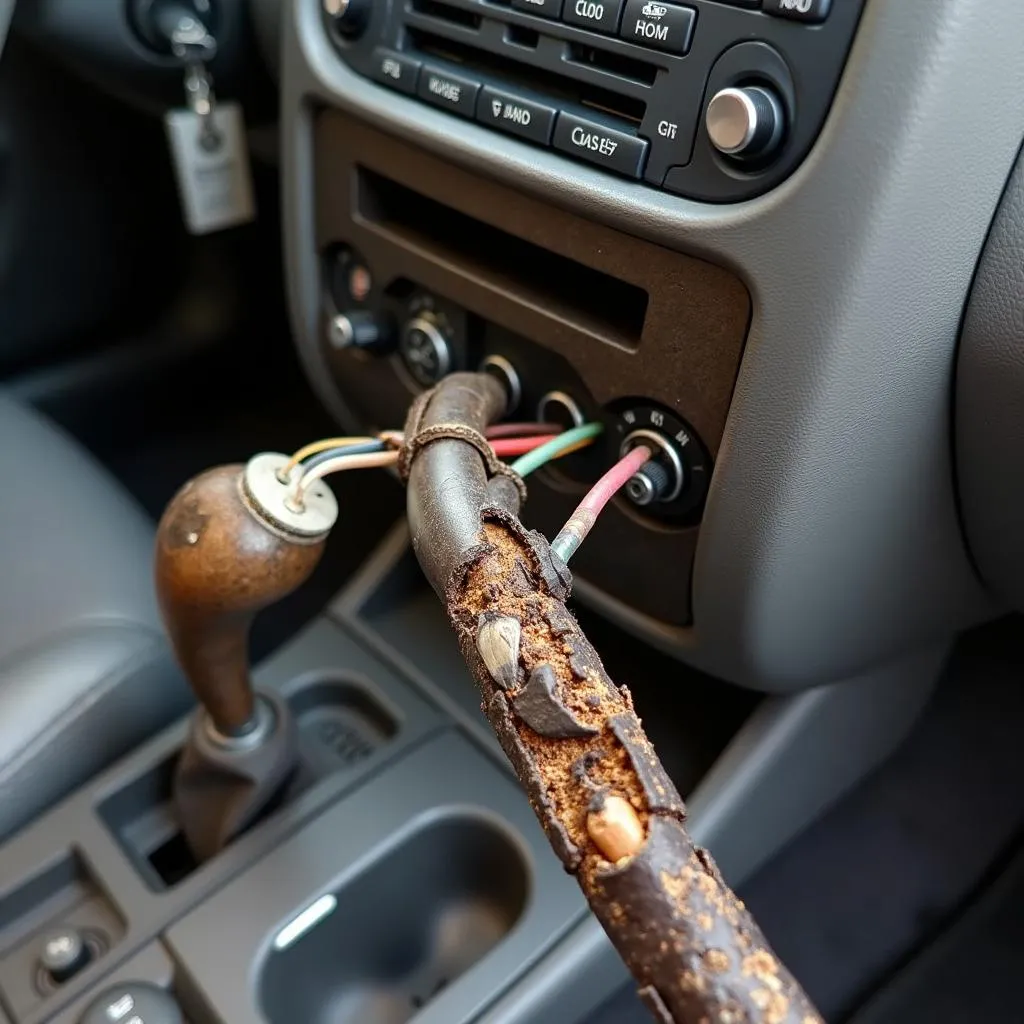The brake warning light on your 2001 Chevy S10 is a crucial safety feature that shouldn’t be ignored. When illuminated, it signals a potential issue within your braking system that requires immediate attention. While it might seem alarming, understanding the common causes and knowing how to troubleshoot the problem can help you address it effectively.
Common Causes of a 2001 Chevy S10 Brake Warning Light
Several factors can trigger the brake warning light in your 2001 Chevy S10. Here are some of the most prevalent culprits:
- Low Brake Fluid: This is one of the most common and easily fixable issues. A leak in your brake lines or worn brake pads can lead to low brake fluid levels.
- Worn Brake Pads: Brake pads have wear indicators that make a squealing sound when they’re nearing the end of their lifespan. If ignored, this can eventually trigger the brake warning light.
- Faulty Brake Light Switch: The brake light switch is responsible for activating your brake lights when you press the pedal. A malfunctioning switch can also illuminate the brake warning light.
- ABS Issues: If your 2001 Chevy S10 has an Anti-lock Braking System (ABS), a problem with its sensors or control module can trigger the warning light.
- Parking Brake Engaged: Sometimes, the simplest answer is the right one. If your parking brake is even slightly engaged, it can cause the warning light to come on.
Troubleshooting Your Brake Warning Light
Before heading to a mechanic, there are a few checks you can perform yourself:
- Check the Parking Brake: Ensure your parking brake is fully released.
- Inspect Brake Fluid Level: Locate the brake fluid reservoir under the hood. Check the fluid level and add DOT 3 brake fluid if necessary. If you need to add fluid frequently, it indicates a leak that needs immediate professional attention.
- Inspect Brake Pads: If possible, visually check your brake pads for wear. If they appear thin or you hear a squealing sound when braking, it’s time for a replacement.
When to Seek Professional Help
If the brake warning light remains illuminated after these checks, it’s crucial to seek professional assistance. Driving with a compromised braking system is incredibly dangerous.
Remote Diagnostics and Software Solutions
In today’s technologically advanced world, remote diagnostics and software solutions are increasingly valuable for vehicle repair.
“Modern vehicles, like the 2001 Chevy S10, rely heavily on electronic systems. Remote diagnostics allow us to quickly pinpoint issues within the ABS module or other electronic components related to braking,” says John Miller, Senior Automotive Engineer at Advanced Auto Solutions.
This means potential problems can be identified and sometimes even rectified remotely, saving you time and money.
Maintaining Your Brake System
Preventative maintenance is key to a healthy brake system. Follow these tips to keep your brakes in optimal condition:
- Regular Inspections: Have your brakes inspected by a qualified mechanic at least once a year or every 12,000 miles.
- Timely Fluid Changes: Brake fluid should be flushed and replaced according to your owner’s manual recommendations.
- Quality Parts: Always use high-quality brake pads, rotors, and other components when replacements are needed.
Conclusion
Ignoring a brake warning light in your 2001 Chevy S10 can lead to dangerous driving conditions. Understanding the common causes and following basic troubleshooting steps can help you address the problem promptly. If the issue persists, seeking professional assistance and considering remote diagnostics can provide a swift and efficient solution, keeping you and your passengers safe on the road.

